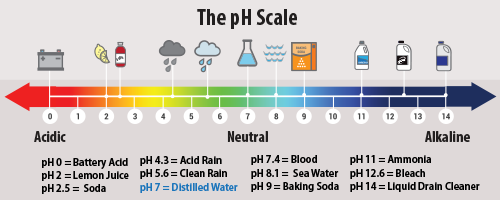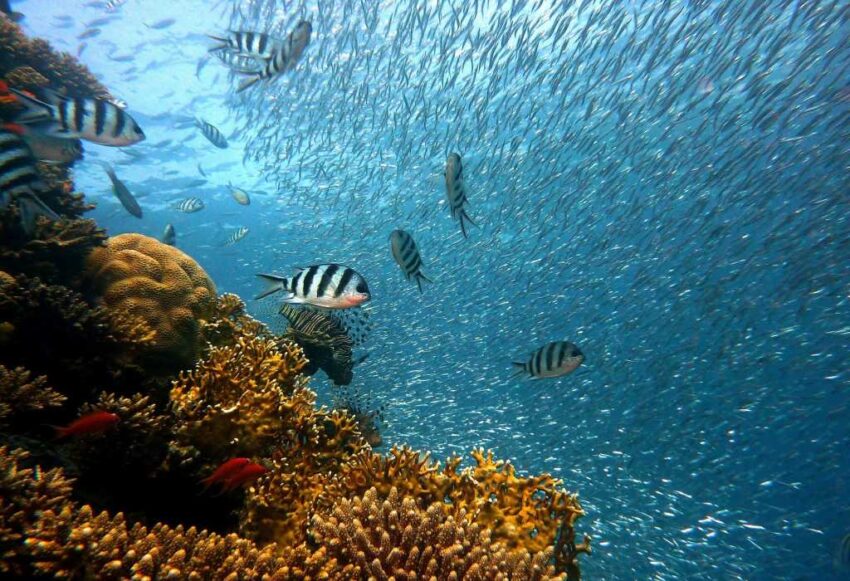The U.K.’s The Guardian ran an article claiming that the world’s oceans have surpassed a critical tipping point in acidity threatening sea life. This is false. The pH content of the world’s oceans varies by time and place throughout the day, rising and falling modestly, but the average pH content remains far from acidic and there is no evidence crustaceans or other types of shellfish are being threatened by the sea water becoming acidic.
Lisa Bachelor, the writer of The Guardian’s article, “‘Ticking timebomb’: sea acidity has reached critical levels, threatening entire ecosystems – study,” says:
The world’s oceans are in worse health than realized, scientists have said today, as they warn that a key measurement shows we are “running out of time” to protect marine ecosystems.
Ocean acidification, often called the “evil twin” of the climate crisis, is caused when carbon dioxide is rapidly absorbed by the ocean, where it reacts with water molecules leading to a fall in the pH level of the seawater. It damages coral reefs and other ocean habitats and, in extreme cases, can dissolve the shells of marine creatures.
Bachelor’s story is based upon a study which claims that ocean acidity has breached a “planetary boundary,” the seventh of nine such milestones or boundaries to be breached, threatening to cause permanent damage to the planet’s health.
The study looked at ice core records and studies of marine life, run through algorithms of complex computer models to assess the past 150 years, concluding the ocean acidification boundary had been breached, with the world facing a “ticking timebomb,” of sea life destruction.
This study’s findings are driven by woefully flawed computer models, a limited time horizon and understanding of long-term history, and lack a basis in real world data. As such it and The Guardian’s dire warnings based on it, are unjustified.
Model outputs are only as good as the assumptions, data, and our understandings of the feedbacks and systems built into them. Even as our knowledge improves, our understanding of the oceans and the interactions of its various currents, systems, inputs, and outputs remain limited, thus the assumptions built into the models are weak and uncertain. As discussed at Climate Realism, here, here, and here, for example, the climate model outputs fail to match reality.
Concerning the limited time scale of this paper’s analysis, 150 years is a blip in the history of the Earth and its oceans. Coral reefs and shellfish have existed, thrived and evolved over tens of millions to hundreds of millions of years, through periods of both more alkaline and more acidic oceans. Based on current data, there is no reason to believe that recent changes in ocean pH threatens a “timebomb,” or apocalypse for shellfish and other sea life, at least not if one cares about solid evidence as opposed to model outputs.
There are, in fact, no scientifically established “planetary boundaries,” or “tipping points.” Rather such claims are political in nature, meant to drive political action (and likely increased funding) on behalf of the concerns of select groups of scientists. If the research of a select group of scientists are to be believed, the Earth has already surpassed seven of the nine purported boundaries – yet, data on extreme weather shows no worsening of hurricanes, tornados, wildfires, heat waves, drought, temperature or weather related deaths, or long-term coral or shellfish decline (at least, for the latter, no decline not tied to pollution and overharvesting). As such, one must wonder what dangers surpassing the supposed boundaries pose if exceeding them results in no identifiable harm that can be linked to the breach?
Which brings us to the crux of the study’s and The Guardian’s assertions that oceans are becoming dangerously acidic. Climate Realism has rebutted previous mainstream media stories claiming human carbon dioxide emissions were causing the oceans to become more acidic on 10 previous occasions. What the evidence shows is ocean pH varies significantly across the globe, with levels in tropical regions being more than twice as high as those in polar and that marine life has evolutionarily adapted to changes in pH.
In addition, the U.S. Environmental Protection Agency acknowledges that sea water has a normal pH of 8.1 and nowhere across the ocean is anywhere close to 7.0 or below. “Although climate models suggest the oceans’ surface pH may have dropped from pH 8.2 to 8.1 since 1750, that change was never actually measured, rather the pH drop is merely a modeled conjecture,” as Climate at a Glance: Ocean Acidification explains. The EPA provides a helpful graphic by way of comparison. (see the graphic, below)

To conclude, acidic oceans make for a good scare story, raising the specter of mountains of dead and disintegrating sea life and perhaps bathers and surfers dissolving before horrified beachgoers’ eyes, but neither imaginative image has any relation to reality. We don’t know for sure whether ocean pH has declined over time during the recent period of climate change, but we do know that more than halfway to a doubling of atmospheric CO2 concentrations above pre-industrial levels, average ocean pH levels are well above the neutral 7 mark, and if they’ve declined at all, it has been by a barely measurable amount. As a result, contra The Guardian’s headline, there is no identifiable “ticking timebomb” threatening ocean ecosystems.
The post Stop Lying, The Guardian, the World’s Oceans Aren’t Becoming Dangerously Acidic appeared first on ClimateRealism.
Click this link for the original source of this article.
Author: H. Sterling Burnett
This content is courtesy of, and owned and copyrighted by, https://climaterealism.com and its author. This content is made available by use of the public RSS feed offered by the host site and is used for educational purposes only. If you are the author or represent the host site and would like this content removed now and in the future, please contact USSANews.com using the email address in the Contact page found in the website menu.








